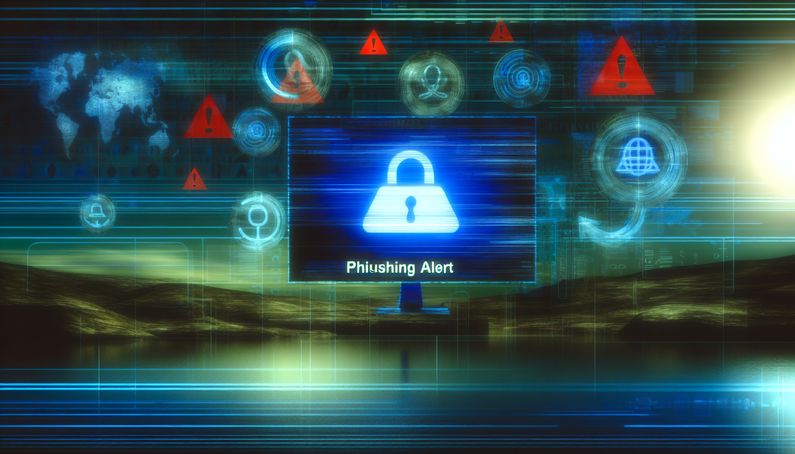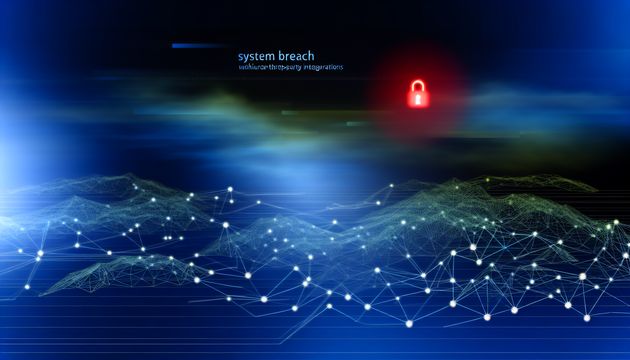
Understanding and Combating Modern Phishing Threats
Phishing attacks have evolved into a sophisticated threat, leveraging trusted sites and real-time validation to deceive even the most cautious users. By embedding malicious content within legitimate websites, attackers exploit the inherent trust users place in well-known domains, making it difficult for traditional security measures to detect these threats. This tactic is particularly effective as it bypasses email filters that typically block suspicious URLs, increasing the likelihood of user interaction (BleepingComputer). Furthermore, the use of real-time validation allows attackers to focus on high-value targets by verifying email addresses before engaging them, thus enhancing the efficiency of their campaigns (Infosecurity Magazine). As these techniques continue to challenge existing defenses, organizations must adapt by enhancing their security measures and educating users about the evolving nature of phishing threats.
Understanding the Attack: Focused Phishing with Trusted Sites and Live Validation
Advanced Phishing Techniques
In the evolving landscape of cyber threats, phishing attacks have become increasingly sophisticated, leveraging trusted sites and live validation to target victims more effectively. This section explores how attackers use these advanced techniques to bypass traditional security measures and increase the success rate of their campaigns.
Trusted Sites Exploitation
Phishing campaigns now often exploit trusted sites to lend credibility to their attacks. By embedding malicious content within seemingly legitimate websites, attackers can deceive users into believing they are interacting with a secure platform. This tactic is particularly effective because users are more likely to trust and engage with content hosted on well-known domains. For instance, attackers might use compromised websites to host phishing pages, thereby bypassing email filters that would typically block suspicious URLs. This method not only increases the likelihood of user interaction but also complicates detection efforts by security systems (BleepingComputer).
Real-Time Validation of Targets
A significant advancement in phishing tactics is the use of real-time validation to ensure that only high-value targets are engaged. This technique, known as “Precision-Validated Phishing,” involves the verification of email addresses before displaying phishing content. By doing so, attackers can focus their efforts on pre-verified, active email addresses, thereby increasing the efficiency and effectiveness of their campaigns. This method not only enhances the success rate of phishing attacks but also reduces the likelihood of detection, as non-targeted individuals are excluded from the phishing process (Infosecurity Magazine).
Impact on Security Measures
The use of trusted sites and live validation in phishing attacks poses significant challenges to traditional security measures. This section examines how these techniques affect the efficacy of existing defenses and what organizations can do to adapt.
Bypassing Email Filters
Traditional email filters are designed to block suspicious emails based on known threat signatures and patterns. However, when phishing attacks leverage trusted sites, these filters may fail to detect the malicious content. This is because the URLs used in such attacks often belong to legitimate domains that are not flagged by security systems. As a result, phishing emails can reach users’ inboxes, increasing the risk of successful attacks. Organizations must therefore enhance their email filtering solutions with advanced threat intelligence and machine learning capabilities to detect and block these sophisticated phishing attempts (Check Point Software).
Complicating Defender Responses
The precision-targeting nature of live validation phishing complicates defender responses by reducing the visibility of attacks. Since only pre-verified targets receive phishing content, security teams may not detect the attack until it has already compromised a user’s credentials. This delayed detection can have severe consequences, as attackers can exploit the stolen credentials to access sensitive information or launch further attacks. To counter this, organizations should implement continuous monitoring and anomaly detection systems that can identify unusual user behavior indicative of a phishing compromise (Cofense).
Human Factors in Phishing Success
Despite technological advancements, human factors remain a critical component in the success of phishing attacks. This section explores how attackers exploit human vulnerabilities and what measures can be taken to mitigate these risks.
Exploiting Trust and Authority
Phishing attacks often exploit human trust and the perception of authority to deceive victims. By impersonating trusted entities or individuals, such as company executives or well-known brands, attackers can manipulate users into divulging sensitive information or clicking on malicious links. This tactic is particularly effective in social engineering scenarios, where attackers craft personalized messages that resonate with the target’s interests or concerns. To mitigate this risk, organizations should conduct regular security awareness training that emphasizes the importance of verifying the authenticity of communications and recognizing common phishing tactics (Help Net Security).
The Role of Security Awareness Training
Security awareness training is a crucial defense against phishing attacks, as it empowers employees to recognize and respond to potential threats. Effective training programs should include phishing simulations that mimic real-world attack scenarios, allowing employees to practice identifying and reporting suspicious emails. Additionally, organizations should provide ongoing education on the latest phishing trends and techniques to ensure that employees remain vigilant against evolving threats. By fostering a culture of security awareness, organizations can reduce the likelihood of successful phishing attacks and minimize the impact of any breaches that do occur (Upfort).
Technological Countermeasures
In response to the advanced techniques used in focused phishing attacks, organizations must adopt technological countermeasures that enhance their security posture. This section outlines some of the key technologies that can help defend against these sophisticated threats.
AI and Machine Learning
Artificial intelligence (AI) and machine learning (ML) are increasingly being used to detect and prevent phishing attacks. These technologies can analyze vast amounts of data to identify patterns and anomalies that may indicate a phishing attempt. By leveraging AI and ML, organizations can improve the accuracy and speed of threat detection, enabling them to respond more effectively to phishing incidents. Additionally, AI-powered solutions can automate the analysis of phishing emails, reducing the burden on security teams and allowing them to focus on more complex threats (Medium).
Multi-Factor Authentication
Multi-factor authentication (MFA) is a critical security measure that can help protect against credential theft resulting from phishing attacks. By requiring users to provide multiple forms of verification, such as a password and a one-time code sent to their mobile device, MFA adds an additional layer of security that can prevent unauthorized access even if credentials are compromised. Organizations should implement MFA across all critical systems and encourage employees to use it for personal accounts as well, thereby reducing the risk of phishing-related breaches (Anubis Networks).
Future Trends and Considerations
As phishing techniques continue to evolve, organizations must stay informed about emerging trends and adapt their defenses accordingly. This section explores some of the future trends in phishing and what organizations can do to prepare.
Increasing Use of AI in Phishing
The use of AI in phishing attacks is expected to increase, as attackers leverage machine learning algorithms to create more convincing and personalized phishing emails. These AI-generated emails can mimic the writing style and tone of legitimate communications, making them harder for users to detect. To counter this threat, organizations should invest in AI-powered security solutions that can identify and block AI-generated phishing emails before they reach users’ inboxes (Spacelift).
The Rise of Mobile Phishing
With the increasing use of mobile devices for work and personal activities, phishing attacks targeting mobile users are on the rise. Mobile phishing can take various forms, including SMS phishing (smishing) and malicious apps that mimic legitimate services. To protect against mobile phishing, organizations should implement mobile device management solutions that enforce security policies and provide visibility into mobile device activity. Additionally, employees should be educated about the risks of mobile phishing and encouraged to use security features such as app verification and secure browsing (Hoxhunt).
Final Thoughts
The landscape of phishing attacks is becoming increasingly complex, with attackers employing advanced techniques such as trusted site exploitation and real-time validation to enhance their success rates. These methods pose significant challenges to traditional security measures, necessitating a shift towards more sophisticated defenses like AI and machine learning. Additionally, the human element remains a critical factor, as attackers exploit trust and authority to deceive victims. Organizations must therefore invest in comprehensive security awareness training to empower employees to recognize and respond to phishing threats effectively (Help Net Security). As phishing tactics continue to evolve, staying informed about emerging trends and adopting proactive security measures will be crucial in mitigating the risks associated with these cyber threats.
References
- BleepingComputer. (2024). Phishing kits now vet victims in real-time before stealing credentials. https://www.bleepingcomputer.com/news/security/phishing-kits-now-vet-victims-in-real-time-before-stealing-credentials/
- Infosecurity Magazine. (2024). Precision-validated phishing. https://www.infosecurity-magazine.com/news/precision-validated-phishing/
- Check Point Software. (2024). Phishing detection techniques. https://www.checkpoint.com/cyber-hub/threat-prevention/what-is-phishing/phishing-detection-techniques/
- Cofense. (2024). Phishing kits now vet victims in real-time before stealing credentials. https://www.bleepingcomputer.com/news/security/phishing-kits-now-vet-victims-in-real-time-before-stealing-credentials/
- Help Net Security. (2025). 2024 phishing trends: What to expect in 2025. https://www.helpnetsecurity.com/2025/02/27/2024-phishing-trends-what-to-expect-in-2025/
- Upfort. (2024). 2024 Upfort phishing attack report. https://www.upfort.com/guides/2024-upfort-phishing-attack-report
- Medium. (2024). Navigating phishing threats in 2025. https://medium.com/@scottbolen/navigating-phishing-threats-in-2025-ea6ff951bca7
- Anubis Networks. (2024). Phishing trends for 2025. https://www.anubisnetworks.com/blog/phishing-trends-for-2025
- Spacelift. (2024). Phishing statistics. https://www.spacelift.io/blog/phishing-statistics
- Hoxhunt. (2024). Phishing trends report. https://hoxhunt.com/guide/phishing-trends-report



